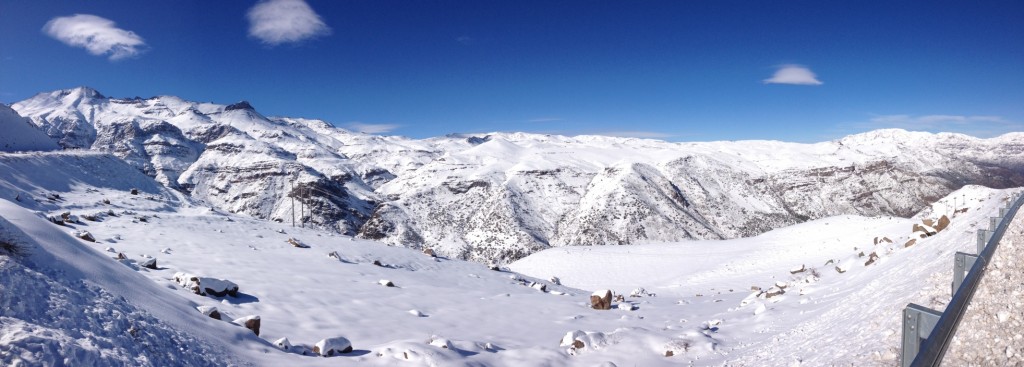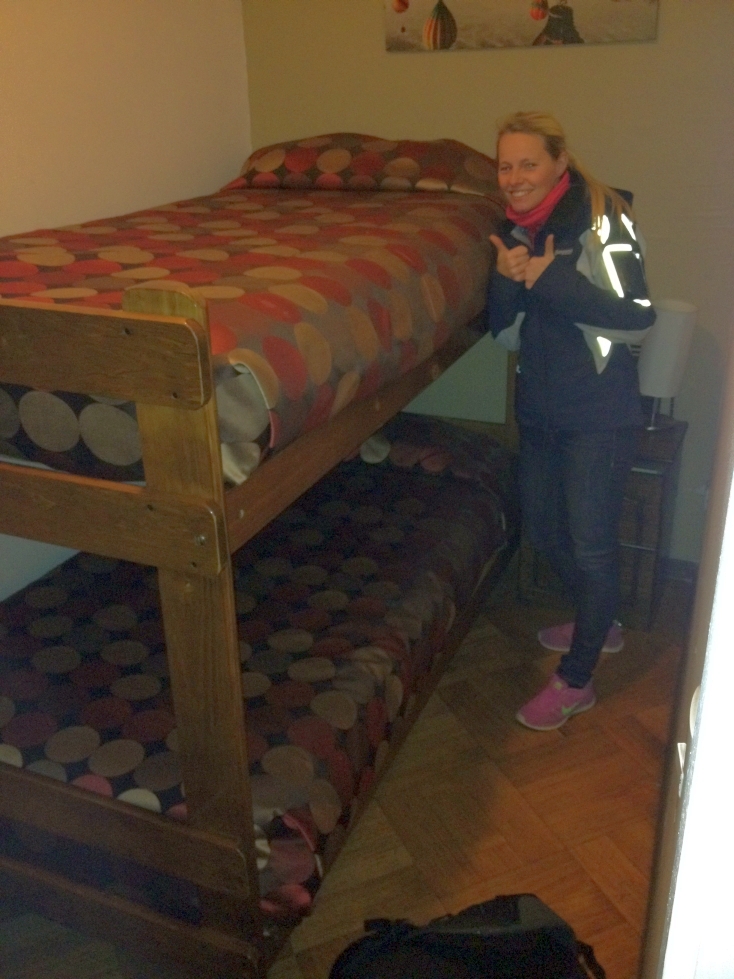Our travel route and some general information about French Polynesia (click here).
Monthly Archives: September 2014
Easter Island – Rapa Nui
It’s far far away and its famous for its stone statues: Easter Island. That’s what we knew. Now we can confirm: yes, the island is far away from everything. It is a 6 hours flight from Santiago de Chile (east) and another 6 hours flight to Tahiti (west). The Dutch admiral Roggeveen landed on the island on Easter Sunday (5 April) 1722 giving it the name “Easter Island” (he must have been a very creative person). The stone statues are called Moai. They are huge human figures carved by the Rapa Nui people between 1250 and 1500 a.c.. Nearly half of them are still at the Rano Raraku (a volcano), where they were produced. Hundreds were transported to other places on the island and set on stone platforms called “Ahu”. Almost all of them face inland overlooking their clan lands – symbolizing the holy ancestors of the Rapa Nui people. The tallest Moai is almost 10 meters (33 ft) high and weights about 82 tons.
The island is small, only measuring around 160 square kilometers with nearly 6.000 inhabitants, who mainly live in the only village – Hanga Roa. The landscape is dominated by deep green grassland with wild horses grazing peacefully, a coastline made up of cliffs and small mountains. The main sights are easy to cover in around 3 days but we had 9. So what is there to do if you have three times more time than the average tourist? Exactly right – nothing. That’s the reason why we decided to visit most sights by foot. One day we hiked for 5 hours up and down the coast, visiting some Moai´s and caves, when we realized that walking back takes at least 3 more hours. Lazy as we are we searched for a solution; no public transport, no own car, no own scooter – we went for hitch-hiking (@ Ma: the island is absolutely safe, most people don’t even lock their doors). The first car passing buy immediately stopped. As we found out the driver got pulled out of the plane by the police the day before because he was involved in a fight in Chile before he started travelling one year ago (…. first time hitch-hiking….). Well, we survived and the following days we kept on hiking a lot but didn’t need a lift. Another highlight was meeting Gauthier de Tessieres (e.g. 2nd place WC in Garmisch), who stayed in the same place than we did. Our 9 days on the island felt like a wellness treatment and we left the island completely relaxed.
Skiing in the Andes – Valle Nevado
Because of unprepared / stupid people without snow chains it took us 2 hours to reach the the ski resort of Valle Nevado. The day before, it snowed a lot therefore the snow was powdery and light. For Eva it has been 7 years since she last stood on ski but it worked surprisingly well 😉 We skied the whole day and only had a quick lunch break with Empanadas, Hamburgersa and a hot chocolate. A little different from what we are used to in Switzerland or Austria but well… you can’t have it all. Tired from our ski trip in the Andes we return to Santiago late in the evening (7pm 😉 and fell asleep early.
Santiago
We had no idea what to expect and were extremely surprised. It’s a modern metropolis with nice neighbourhoods, restaurants, and parks. Most important: it’s remarkable safe compared to all South American countries. But the best thing is its location: flanked by the Andes to the east (40 kms) and the coast to the west (60 kms). In the hostel we learned that the three major ski resorts of Chile are just an hour drive from Santiago.
On our way from the airport two ladies from Santiago gave us a quick sightseeing tour. While in santiago we met a lot of friendly people like these two, for example an old lady came up to Niels in the supermarket and told him not to take the apples he chose but other – better – ones. The next day we went sightseeing and Niels convinced Eva to book a day trip to Valle Nevado the next day (next post).
Death Road!
The worlds most dangerous road is the old road between La Paz and Coroico. An average of 26 vehicles every year went down the edge, hence a new road was built in 2007. The old road is now mainly used by cyclists who want to enjoy the 64 km long and 3.600 meter (from 4800 to 1200) descent ride. The first 20 km are on a paved road where you regularly overtake other vehicles. It was a very good warm up for what was to come: the real death road – unsealed, narrow (around 2-3 m wide), cliffs with drops up to 600 m and only a few safety barriers. Eva didn’t feel 100% comfortable because of all the stones and the slipping bike. We speeded down the road but had quite some safety stops. The surrounding landscape was unreal once more. At the starting point mountains were covered in snow and it was freezing cold. Reaching the lowest point of the trip at around 1.200m above sea level rainforest-like vegetation came up including humming birds and mosquitos.
The day was a great adventure!
Uyuni – Day 3
The night was freezing cold but again it didn’t pose a problem. We had to get up early to see the sunrise at the “Sol de Mañana” geyser basin with its boiling mud pots. Shortly before reaching the area the highest altitude of the tour was reached (4.907 m above sea level). The atmosphere at sun rise is magical. But it was quite cold while we walked among the smoky geysers. To heat up again the next stop were the hot springs nearby, where we hopped in the 38°C water. From there we headed back north in the impressing desert: its so colorful. With the clear blue sky it’s the perfect set for hour-long window-watching while driving.
Last but not least we made an extra stop at “Valles de Roca”, a huge lava field which got its today form from a earth quake long time ago. While we drove in one of the valleys, a true paradise unfolded: a valley covered with grass, a large lagoon, llamas and no one else besides us. As we found out later on, this spot is not visited by 90% of the tours – lucky us!
On the way back to Uyuni our guide stopped the car in San Cristóbal. A village which was moved from its original place because of one the biggest silver mines in the world. The church was fully reconstructed in the new place (every single stone).In the late afternoon we reached Uyuni and took the night bus to La Paz again. This time the bus took 12 hours only. Including 3 break downs (in the middle of the pitch black nowhere) and one drive-off the road. Arriving safely in La Paz we found out that a bus on the way from Uyuni to La Paz just ran off and crashed three days ago. Apparently, that happens at least once a month.
Sol de Mañana 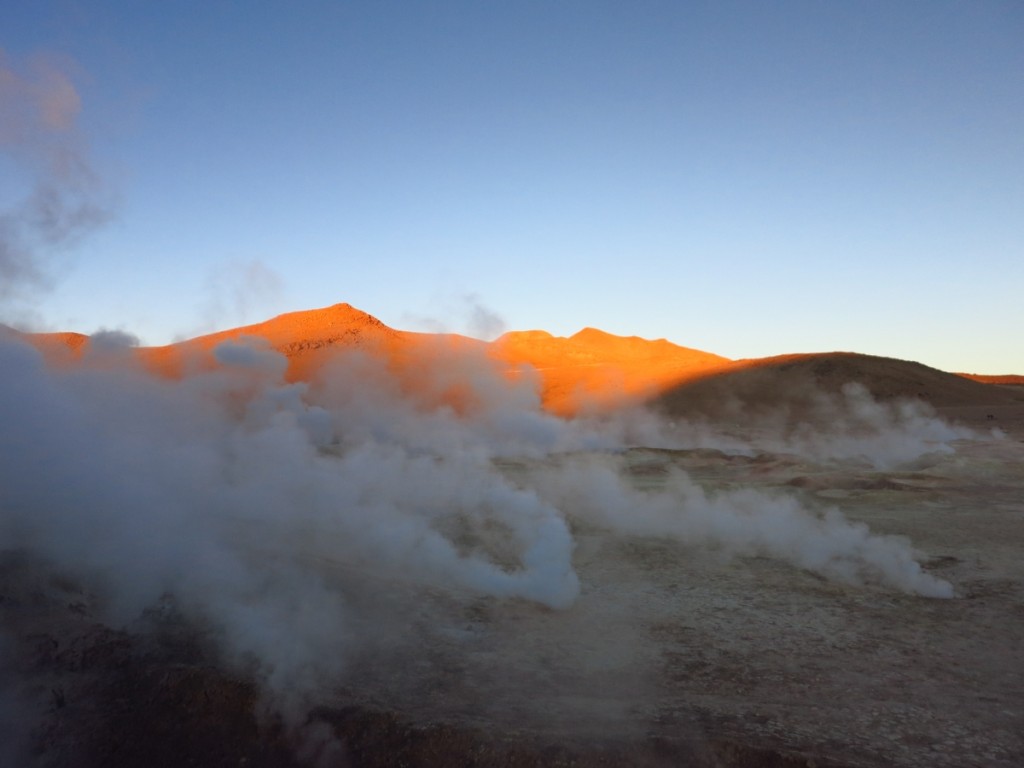
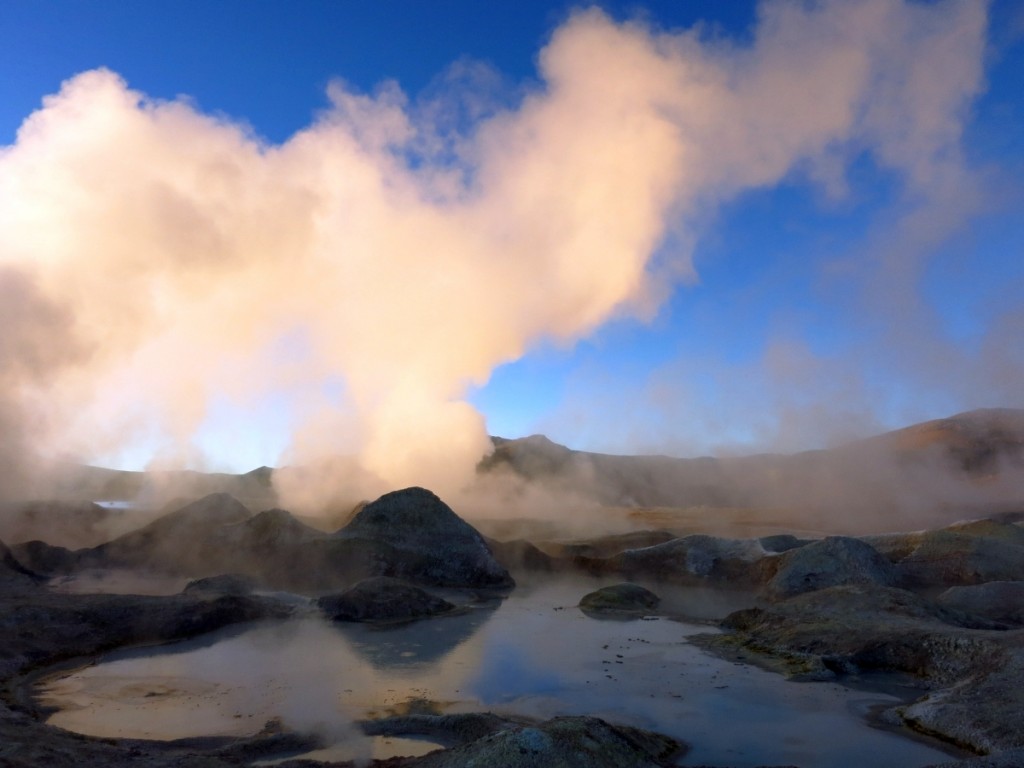
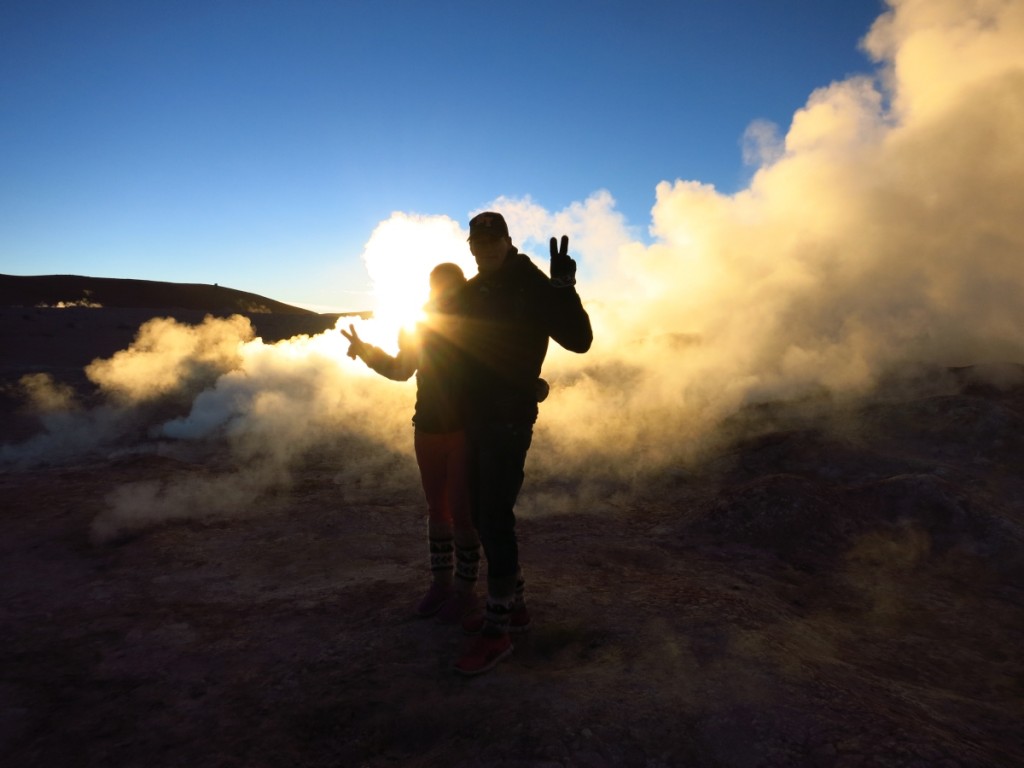 Continue reading
Continue reading


